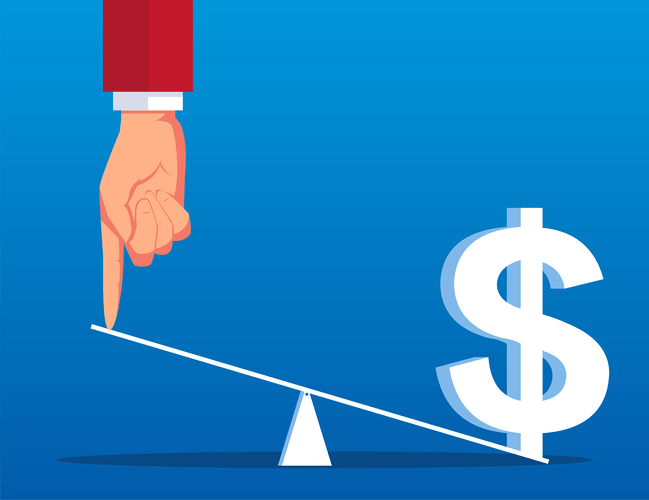Accounting Equation Overview, Formula, and Examples
Content

Each example shows how different transactions affect the accounting equations. These may include loans, accounts payable, mortgages, deferred revenues, bond issues, warranties, and accrued expenses. The balance of the total assets after considering all of the above transactions amounts to $36,450. It is equal to the combined balance of total liabilities of $20,600 and capital of $15,850 (a total of $36,450).
Include the value of all investments from any stakeholders in your equity as well. Subtract your total assets from your total liabilities to calculate your business equity. But, that does not mean you have to be an accountant to understand the basics. Part of the basics is looking at how you pay for your assets—financed with debt or paid for with capital. If a business buys raw materials and pays in cash, it will result in an increase in the company’s inventory (an asset) while reducing cash capital (another asset). Because there are two or more accounts affected by every transaction carried out by a company, the accounting system is referred to as double-entry accounting.
Assets
This should be impossible if you are using accounting software, but is entirely possible (if not likely) if you are recording accounting transactions manually. In the latter case, the only way to correct the issue is to review all entries made to date, to find the unbalanced entry. The fundamental accounting equation is debatably the foundation of all accounting, specifically the double-entry accounting system and accounting equation the balance sheet. Double-entry accounting is the concept that every transaction will affect both sides of the accounting equation equally, and the equation will stay balanced at all times. Double-entry accounting is used for journal entries of any kind. The expanded accounting equation breaks down shareholder’s equity (otherwise known as owners’ equity) into more depth than the fundamental accounting equation.
- If you’re interested in preparing to pursue a career in accounting, then DeVry can help you get started.
- Shareholders’ equity is the total value of the company expressed in dollars.
- This equation sets the foundation of double-entry accounting, also known as double-entry bookkeeping, and highlights the structure of the balance sheet.
- Thus, you have resources with offsetting claims against those resources, either from creditors or investors.
- Think of retained earnings as savings, since it represents the total profits that have been saved and put aside (or «retained») for future use.
- Capital essentially represents how much the owners have invested into the business along with any accumulated retained profits or losses.
- It also provides insights into the growing trend, which can help stakeholders make sound business and economic decisions.
Using the balance sheet, a financial analyst can calculate a number of financial ratios to determine how well a company is performing, how efficient is it is, and how liquid it is. Changes in the balance sheet are used to calculate cash flow in the cash flow statement. Equity is any amount of money remaining after liabilities are subtracted from assets.
The balance sheet always balances – Asset = Liability + Owner’s equities
Cash (asset) will reduce by $10 due to Anushka using the cash belonging to the business to pay for her own personal expense. As this is not really an expense of the business, Anushka is effectively being paid amounts owed to her as the owner of the business (drawings). Therefore cash (asset) will reduce by $60 to pay the interest (expense) of $60. Because you make purchases with debt or capital, both sides of the equation must equal.
- You may have made a journal entry where the debits do not match the credits.
- It can also be described as the difference between assets and liabilities.
- The capital would ultimately belong to you as the business owner.
- While the basic accounting equation’s main goal is to show the financial position of the business.
- This reduces the cash (Asset) account and reduces the retained earnings (Equity) account.
The Liabilities part of the equation is usually comprised of accounts payable that are owed to suppliers, a variety of accrued liabilities, such as sales taxes and income taxes, and debt payable to lenders. Accounts payable include all goods and services billed to the company by suppliers that have not yet been paid. Accrued liabilities are for goods and services that have been provided to the company, but for which no supplier invoice has yet been received. The balance sheet must be balanced, i.e. the level of assets must correspond to the level of liability. To illustrate this principle, let’s take the example of a company that makes a profit.
Introduction to the Accounting Equation
Let’s check out what causes increases and decreases in the owner’s equity. Show the impact of the following transactions in the accounting equation. Johnson INC. purchased a machine for $ and paid $ in cash; the rest could be paid later. The transaction results in https://www.bookstime.com/articles/adjusting-entries an inflow of machines, an outflow of cash, and the creation of liability for the balance amount to be paid. The difference of assets and owner’s investment into business is your liabilities which you owe others in the form of payables to suppliers, banks etc.
A transaction like this affects only the assets of the equation and there is no corresponding effect in liabilities or shareholder equity on the right side of the equation. To make the Accounting Equation topic even easier to understand, we created a collection of premium materials called AccountingCoach PRO. Our PRO users get lifetime access to our accounting equation visual tutorial, cheat sheet, flashcards, quick test, and more. $10,000 of cash (asset) will be received from the bank but the business must also record an equal amount representing the fact that the loan (liability) will eventually need to be repaid. Required
Explain how each of the above transactions impact the accounting equation and illustrate the cumulative effect that they have.
As you can see, assets equal the sum of liabilities and owner’s equity. This makes sense when you think about it because liabilities and equity are essentially just sources of funding for companies to purchase assets. Liabilities are considered to be anything that is a claim against the company’s assets, such as payments or debts that the company owes. Ultimately, liabilities have a negative value representation, and are offset using the double accounting principle.

Any user of a balance sheet must then evaluate the resulting information to decide whether a business is sufficiently liquid and is being operated in a fiscally sound manner. The Shareholders’ Equity part of the equation is more complex than simply being the amount paid to the company by investors. It is actually their initial investment, plus any subsequent gains, minus any subsequent losses, minus any dividends or other withdrawals paid to the investors. The shareholders’ equity section tends to increase for larger businesses, since lenders want to see a large investment in a business before they will lend significant funds to an organization.

